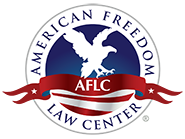Today, the American Freedom Law Center (AFLC) filed a letter brief in its legal challenge of the HHS mandate on behalf of Priests for Life. An excerpt of the letter follows:
Plaintiff Priests for Life (“Plaintiff”) hereby respectfully submits this response to the two “notice of supplemental authority” letters (Doc. Nos. 48 & 49) filed by Defendants on February 8, 2013 and February 19, 2013, respectively. . . .
In their February 8, 2013, letter to this court (Doc. No. 48), Defendants cite the much anticipated new rule (NPRM), but there is nothing substantively new about it. Indeed, this NPRM does essentially two things, see 78 Fed. Reg. 8456, 8458 (Feb. 6, 2013) (“The proposed rules would make two principal changes to the preventive services coverage rules to provide women contraceptive coverage . . . .”), neither of which resolves the legal issues presented by this case. These changes are discussed in greater detail below.
First, the NPRM changes the definition of “religious employer” for purposes of the only exemption from the mandate that provides meaningful protection for religious liberty and the right of conscience (i.e., it exempts the organization from having to provide any offending coverage). While the proposed change does eliminate three criteria from the current definition of “religious employer” for purposes of this exemption, it ultimately adopts a definition that includes only those organizations that fall under Section 6033(a)(3)(A)(i) or (iii) of the Internal Revenue Code. 78 Fed. Reg. at 8461 (“Under this proposal, an employer that is organized and operates as a nonprofit entity and referred to in section 6033(a)(3)(A)(i) or (iii) of the Code would be considered a religious employer for purposes of the religious employer exemption.”). These organizations are essentially churches and religious orders—a very narrow class of nonprofit organizations that are not required to file tax returns. Plaintiff, while a nonprofit religious organization, does not qualify for this narrow exemption. Consequently, the government revised the religious employer exemption by not expanding it for organizations such as Plaintiff, but by excluding such organizations altogether. This should end the standing/ripeness inquiry in favor of Plaintiff. Indeed, the government’s promise to protect religious liberty was, as anticipated, an empty promise. If the government truly intended to “never” enforce the contraception coverage mandate against any religious employer (or non-religious employer that objects on religious grounds to the mandate for that matter) (see, e.g., Defs.’ Ltr. of Feb. 8, 2013 at 2 [“Defendants have stated on numerous occasions . . . that the regulations in their current form will never be enforced against employers like plaintiff . . . .”] [Doc. No. 48]), it would have included them in the only exemption to providing such coverage, but it didn’t.
Second, the NPRM provides what the government incorrectly believes to be an acceptable “accommodation” for other nonprofit religious organizations that oppose the mandated contraceptive services, such as Plaintiff. See 78 Fed. Reg. at 8462 (defining “eligible organizations”). However, even the NPRM acknowledges that “eligible organizations with religious objections to contraceptive coverage . . . . [must still] comply with the requirement to provide coverage for contraceptive services.” Id. According to the government’s new application of the mandate, these nonprofit organizations “would not have to contract, arrange, pay or refer for any contraceptive coverage to which they object on religious grounds.” Id. Instead, the “issuer” [i.e., the insurance company] of the organization’s healthcare plan would be required to provide separate individual health insurance policies “for plan participants and beneficiaries [i.e., Plaintiff’s employees] without cost sharing, premium, fee, or other charge.” Id. (emphasis added). “The issuer would automatically enroll plan participants and beneficiaries in a separate individual health insurance policy that covers recommended contraceptive services.” Id. at 8463. (emphasis added). The government claims that this is “cost neutral because they [insurance companies] would be insuring the same set of individuals under both polices and would experience lower costs from improvements in women’s health and fewer childbirths.” Id. at 8463.
In sum, by virtue of the fact that Plaintiff provides health insurance for its employees, its employees will now have insurance that covers contraception, sterilization, and abortifacients. Consequently, the federal government is still forcing Plaintiff to “cooperate with evil.” The “contraceptive services” at issue are not morally neutral, as the government seems to think. Plaintiff does not just “accept” these services—it morally opposes them. The government is thus forcing Plaintiff into a moral predicament that violates its rights protected by both the Free Exercise Clause of the First Amendment and the Religious Freedom Restoration Act, 42 U.S.C. § 2000bb. If Plaintiff wants to have health insurance, then it must also provide contraceptive services coverage to its employees by order of the federal government. There is no way to avoid this conclusion, which is unacceptable morally and legally. See, e.g., Korte v. Sebelius, No. 12-3841, 2012 U.S. App. LEXIS 26734, at *10 (7th Cir. Dec. 28, 2012) (“The religious-liberty violation at issue here inheres in the coerced coverage of contraception, abortifacients, sterilization, and related services, not—or perhaps more precisely, not only—in the later purchase or use of contraception or related services.”); see also Thomas v. Rev. Bd. of Ind. Emp’t Sec. Div., 450 U.S. 707, 713, 717-718 (1981) (holding that by denying employment benefits because the employee refused, on religious grounds, to work in a plant that produced armaments, the government imposed a substantial burden on the employee’s exercise of religion by “putting substantial pressure on an adherent to modify his behavior and to violate his beliefs,” noting that “[w]hile the compulsion may be indirect, the infringement upon free exercise is nonetheless substantial”) (emphasis added).
In conclusion, the current mandate is the law of the land. See 42 U.S.C. § 300gg-13(a)(4). The government’s most recent articulation of how that mandate will apply to Plaintiff does not change the substantive legal claims at issue in this case. . . .
* * *
Read the full letter here.
